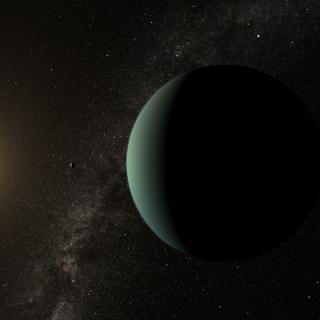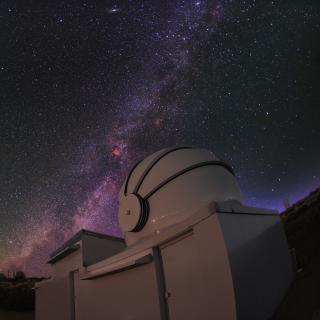The QUIJOTE experiment operates from the Teide Observatory with the goal of characterising the polarization properties of the cosmic microwave background radiation and other Galactic and extra-galactic emission mechanisms in the frequency range 10-42GHz and at large angular scales. Within the studies conducted in the context of characterizing the diffuse radio emissions of our Galaxy, an "anomalous" microwave emission from the Taurus Molecular Cloud (TMC) has been detected with QUIJOTE. This type of emission was detected for the first time about 20 years ago, and cannot be explained in terms of the previously known physical processes producing emission in the microwave domain: synchrotron, free-free emission and thermal dust emission. The anomalous emission is probably produced by rotational emission of very small dust particles, which form a part of the interstellar medium. The polarization properties of this emission have to be characterized and understood, since it constitutes a polluting emission veiling the polarization of the cosmic microwave background that comes from the new-born Universe. The molecular cloud in the constellation of Taurus (the Bull) is one of the nearest and youngest regions of star formation, where the “Anomalous Diffuse Microwave Emission” can be produced. The measurements of the Anomalous Microwave Emission in the TMC show the relevance and the importance of the data from QUIJOTE with the Multi-Frequency Instrument (MFI) observing at 11, 13, 17 and 19 GHz. Without the information from QUIJOTE-MFI, previous studies had underestimated the amplitude of this emission. The QUIJOTE-MFI data clearly shows the presence of anomalous emission, tracing the spectral energy distribution of the emission with great precision. This study improves the statistics of the detection of the Anomalous Microwave Emission from Galactic sources, and confirms the low level of polarization expected form this component.
Left panel: Spectral energy distribution of the Taurus molecular cloud region. The AME (Anomalous Microwave Emission) is modelled by the red dashed line. Right panel: Extinction map of the Taurus molecular cloud region. This region is delineated by the bl
Advertised on
Authors
Frédéric Nicolas David
Poidevin
José Alberto
Rubiño Martín
C. Dickinson
Ricardo Tanausú
Genova Santos
S. Harper
Prof.
Rafael
Rebolo López
B. Casaponsa
A. Peláez-Santos
R. Vignaga
D. Tramonte
F. Vansyngel
M. Ashdown
D. Herranz
Roger John
Hoyland
A. Lasenby
E. Martínez-González
L. Piccrillo
R. A. Watson
References
2019 MNRAS 486 462



